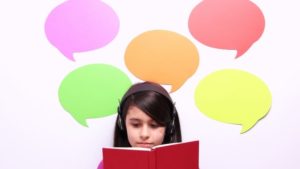Experts agree that reading is a process including a number of fundamental skills, one of which is phonics proficiency. Here are some simple ways to encourage your child to read:
1) Participation
Taking an active role in your child’s development of a love of reading and writing. Your kid will love the process of reading if he or she is actively involved. As a result, you’ll be able to read aloud with a lot of emotion. If your kid enjoys reading, he or she will enjoy writing as well. Writing is about thinking, feeling, and connecting with the written word, not just penmanship.
2) Active comprehension
For effective learning, develop your child’s active understanding. The development of your child’s analytical and higher-order thinking skills is aided by his or her capacity to actively absorb and interact with words in all four areas of language: reading, writing, speaking and listening.
3) Narrative intelligence is used to develop higher-order thinking skills.
To make better sense of the world, nurture your child’s thinking and intelligence. The ability to make sense of the world through sequential comprehension and unique ways to ask the proper questions and develop new responses is known as narrative intelligence. It develops your child’s Narrative Intelligence through Immersive Reading and Theatrical Strategies, which help them develop higher-order thinking skills and interact with textual content and knowledge.
4) Phonemic Sensitivity
Teaching your child to understand sounds in context is essential for future language acquisition. Phonemic Awareness is the ability to ‘hear’ and control the individual sounds of a language; your child must be able to hear these sounds in the context in order to master them later on. Your kid will become aware of words as unique entities as a result of meaningful reading activities. While engaging in meaningful writing activities, your child will also acquire a sense of sounds and words.
5) Phonics
You can help your kid connect sounds to symbols. While phonics is an important part of a well-rounded reading program, it is simply one component. We’ve designed a hybrid approach to accommodate diverse learning styles. Our ‘Say & Sing Phonics’ method helps your child master the relationship between symbols and sounds (phonics) by allowing them to experience it in a real-world setting.
6) Proficiency
Get your child used to the language’s natural flow. The capacity to understand – and use – the inherent flow and rhythm of a language is known as fluency. Children, especially those who do not speak English as their first language, need to hear and see good readers. Your kid will be able to achieve fluency and understanding through interesting experiences. Rhyme, repetition, and music are among such experiences.
7) Vocabulary development
A life-long reader’s vocabulary – or word-mastery – is an essential quality. Your child will learn vocabulary through stories, rhymes, and alliteration with the books making vocabulary acquisition simple and enjoyable.
8) Structural Consciousness
Develop your child’s grasp of how language works. The ability of the brain to intuitively recognize how the words in a sentence ‘fit together is known as structural awareness. Your child will gradually internalize how language is created through verbal sharing of dialogue, stories, poetry, songs, and ideas, leading to an appreciation of how to tie what he or she has read to earlier knowledge. Giving your child these 8 vital learning tools to help them improve their literacy abilities will give them an advantage in elementary school and beyond!













